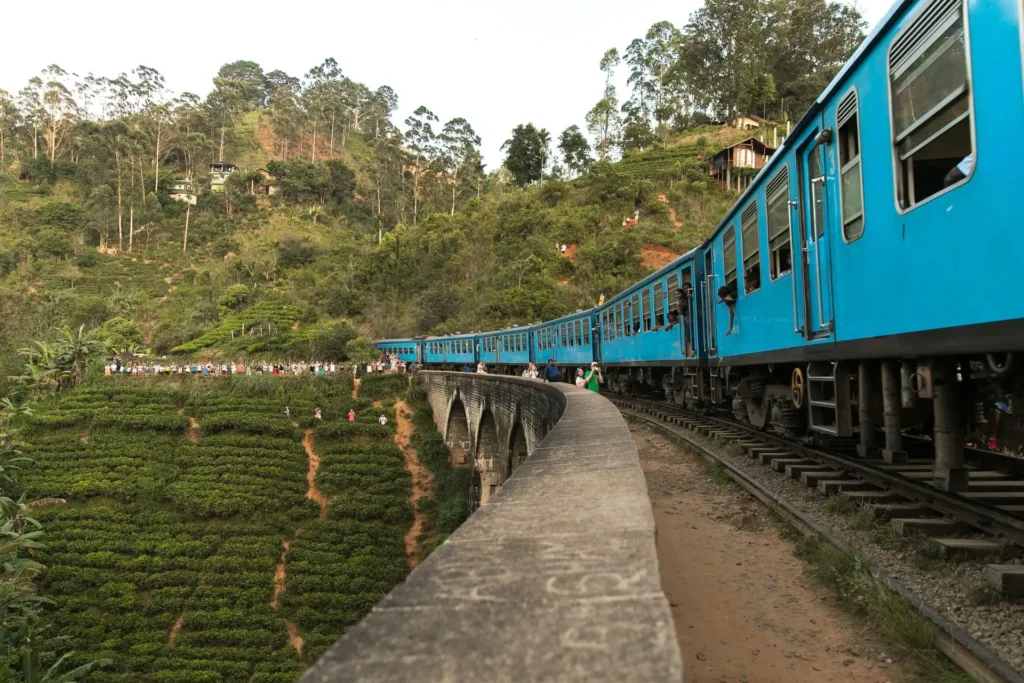
Find out the best time to visit Sri Lanka
Discover the enchanting wonders of Sri Lanka, where stunning landscapes, rich history, and warm hospitality await.
Resting in the Indian Ocean, this island nation boasts lush jungles, golden beaches, and a vibrant culture. Whether you’re an adventure seeker or a history enthusiast, Sri Lanka offers an enchanting experience.
In this blog post, we delve into the best months to visit Sri Lanka and uncover the island’s hidden gems.
Don’t forget to arrange your travel currency in advance with us before going on your Sri Lankan journey!
The Sri Lankan rupee is a minor currency. This can pose challenges when trying to obtain them from banks or post offices.
Fortunately, our online platform provides exceptional exchange rates. You’ll be well-prepared to explore the national parks and historic marvels of Sri Lanka.
Your Sri Lanka travel guide, month-by-month
Are you gearing up for a Sri Lankan adventure? It’s time to uncover the incredible treasures this country has in store for you. Your initial step toward crafting unforgettable memories begins with understanding the climate.
But before diving into Sri Lanka’s wonders, let’s talk money. Sri Lankan rupees are not the easiest currency to get ahold of, but we’ve got your back!
We’re here to offer you fantastic exchange rates and some valuable insider tips that will make your vacation even more special. Have you already got your holiday plans locked in? Order your Sri Lankan rupees today!
If you’re still in the planning phase, don’t go anywhere just yet. Join us as we journey through the seasons and uncover the best time for your trip to Sri Lanka.
Buy your Sri Lankan rupees now
Visiting Sri Lanka during the monsoon season
Travelling to Sri Lanka during the monsoon season can be a unique experience. The rain transforms the island into a lush green paradise, granting you the luxury of fewer fellow travellers.
Remember to gear up for the weather conditions and be ready for any disruptions that heavy rainfall may bring!
If you are wondering when is the best time to holiday in Sri Lanka? Here’s a breakdown of the country’s monsoon season.
Sri Lanka experiences two main monsoon seasons, one affecting the southwest and the other involving the northeast of the island:
- Southwest Monsoon (Yala Monsoon): This monsoon season typically occurs from May to August. During this period, the southwestern parts of Sri Lanka experiences heavy rainfall.
- Northeast Monsoon (Maha Monsoon): The northeast monsoon season generally occurs from October to January. During this time, the northeastern parts of Sri Lanka, such as Trincomalee and the eastern coast, experience their primary rainy season.
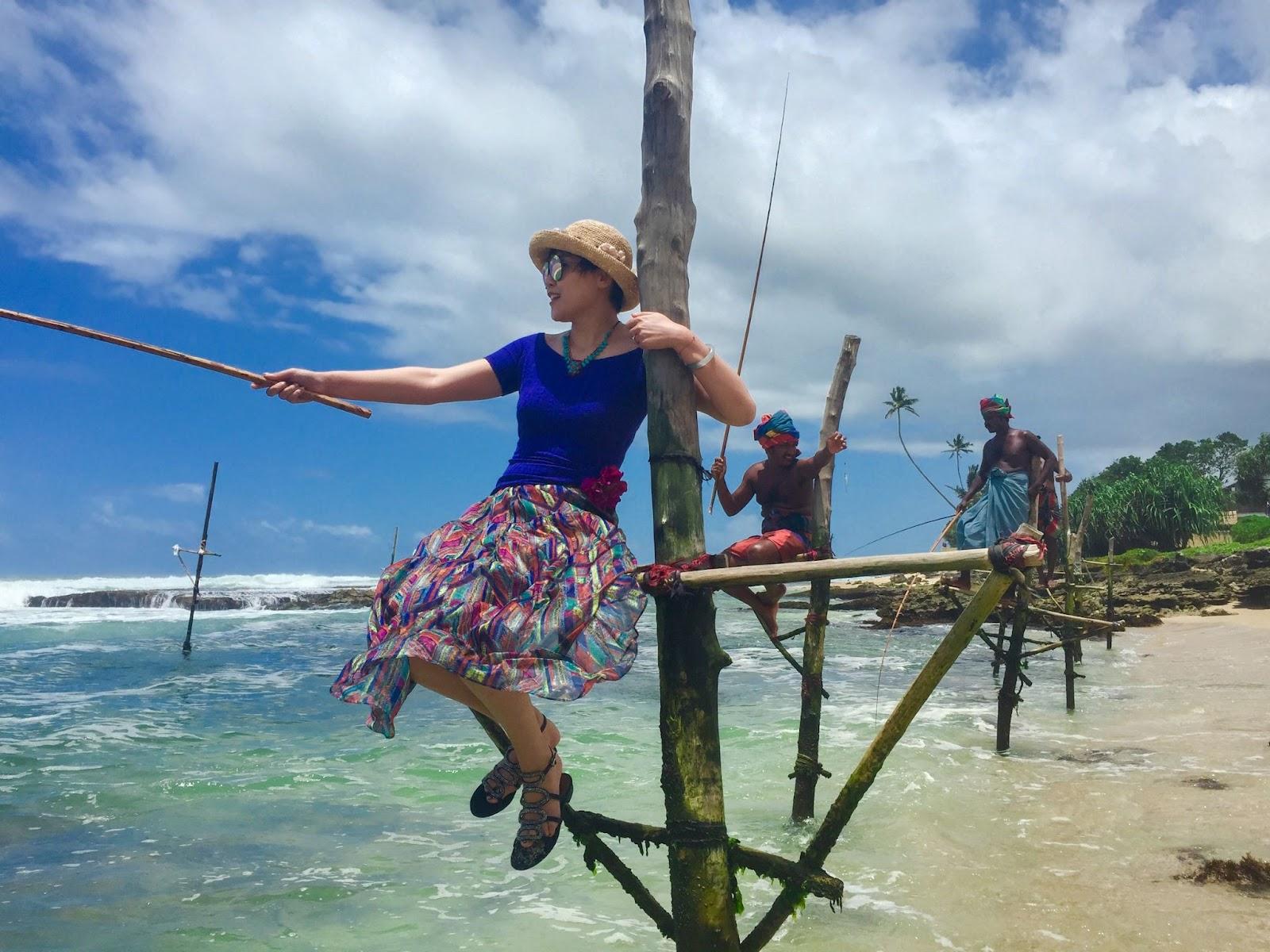
January
In January, Sri Lanka experiences the tail end of the northeast monsoon season, also known as the Maha season.
Weather by region
Western and southern coastal areas:
Temperature: Daytime temperatures range from 27°C to 30°C (81°F to 86°F).
Rainfall: These regions experience occasional rain, which is lighter than in the eastern and northern areas.
Eastern coastal areas:
Temperature: Daytime temperatures range from 27°C to 30°C (81°F to 86°F).
Rainfall: The eastern coast receives the most rainfall during the northeast monsoon, with heavy and consistent showers.
Hill country:
Temperature: Daytime temperatures are more relaxed, ranging from 15°C to 20°C (59°F to 68°F).
Rainfall: The hill country experiences rainfall, which is less intense than in coastal and eastern areas. It can be misty or cloudy at times.
Northern and north-central areas:
Temperature: Daytime temperatures range from 27°C to 30°C (81°F to 86°F).
Rainfall: These regions also experience heavy rain, especially in the north.
The cultural triangle:
Temperature: Daytime temperatures are moderate, ranging from 22°C to 28°C (72°F to 82°F).
Rainfall: Rainfall is sporadic. You can expect mostly dry and sunny days.
Top 3 things to do in Sri Lanka in January
- Enjoy Independence Day in Sri Lanka: Witness colourful military parades, marching bands and traditional dancers as part of the celebrations.
- Wildlife Safari in Yala National Park: Located in southern Sri Lanka, it is renowned for its diverse wildlife. The dry weather increases the chances of spotting elephants near water sources.
- Relax on Sri Lanka’s Beaches: Sri Lanka boasts beautiful beaches along its coastline. Make sure to visit Mirissa, Unawatuna, and Bentota on your next visit!
These activities allow you to enjoy Sri Lanka’s pleasant January weather while experiencing its natural beauty, culture, and outdoor adventures.
February
In February, the weather begins to transition towards the upcoming dry season.
Weather by region
Western and southern coastal areas:
Temperature: Daytime temperatures range from 27°C to 32°C (81°F to 90°F).
Rainfall: These regions experience a decrease in rainfall compared to the previous months. February marks the beginning of the dry season for the southwestern coastal areas.
Eastern coastal areas:
Temperature: Daytime temperatures range from 27°C to 32°C (81°F to 90°F).
Rainfall: The eastern coast continues to experience rain, but it may be less intense than in January.
Hill country:
Temperature: Daytime temperatures range from 15°C to 22°C (59°F to 72°F).
Rainfall: The hill country experiences lower rainfall in February. It’s a great time for tea plantation tours!
Northern and north – central areas:
Temperature: Daytime temperatures range from 27°C to 32°C (81°F to 90°F).
Rainfall: These regions also see a reduction in rainfall compared to earlier months.
The cultural triangle:
Temperature: Daytime temperatures range from 22°C to 30°C (72°F to 86°F).
Rainfall: The central and inland areas experience drier conditions.
Overall, February is a transitional month in Sri Lanka. It’s a great time to visit various parts of the country.
Top 3 things to do in Sri Lanka in February
- Whale Watching in Mirissa: February is an excellent time to witness the majestic blue whales and other marine life. Join a whale-watching tour for a chance to see these gentle giants in their natural habitat.
- Attend the Kala Pola Art Festival: One of South Asia’s largest open-air art exhibitions. Stroll through the vibrant streets filled with artwork by local artists, photographers and sculptors.
- Visit the Sinharaja Forest Reserve: A UNESCO World Heritage Site and one of the last remaining rainforests in Sri Lanka. The weather is relatively dry, making hiking and exploring the jungle easier.
From marine adventures to cultural immersion, February is a great time to explore the beauty of Sri Lanka.
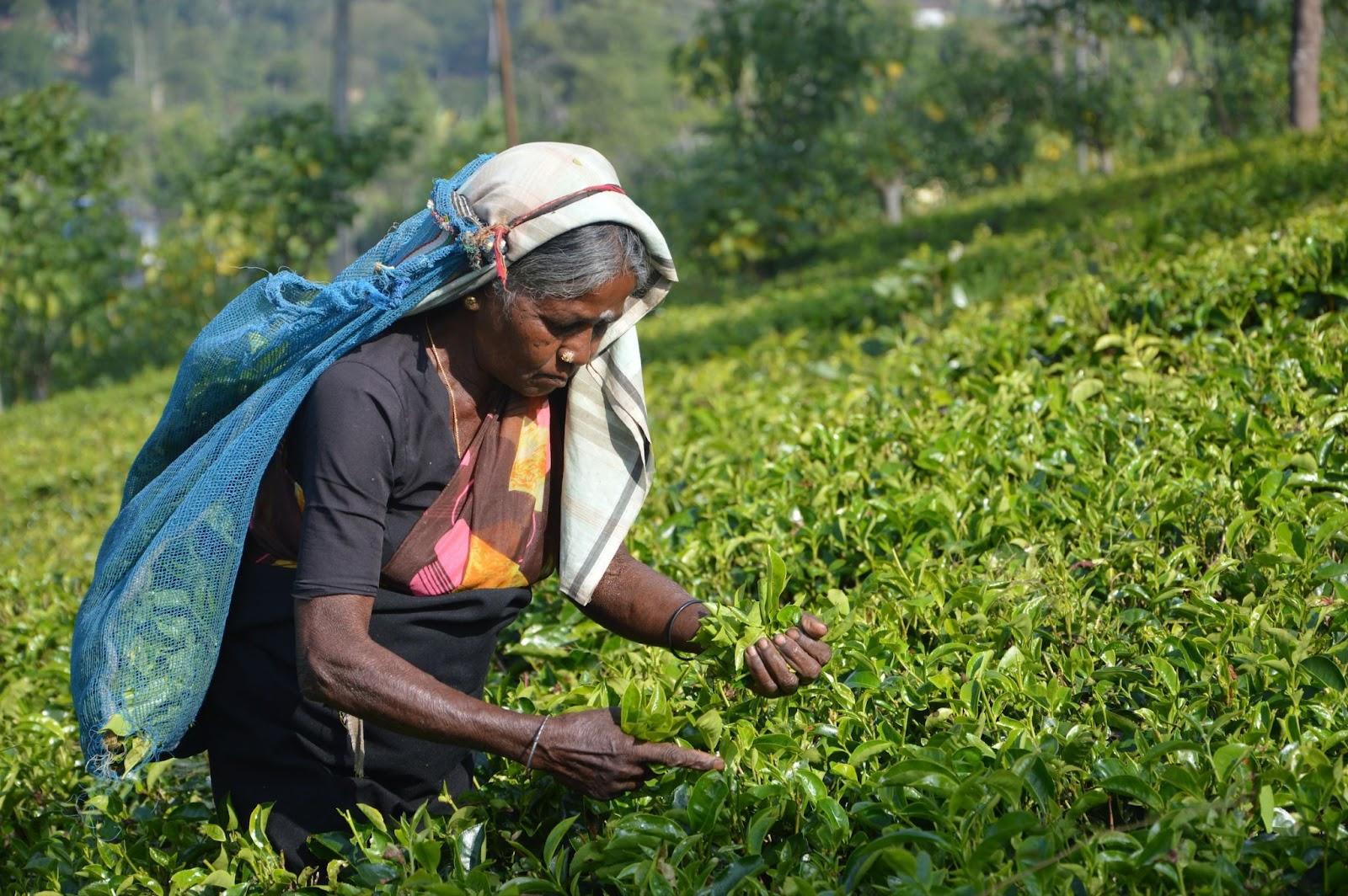
March
Sri Lanka experiences a transition from the northeast monsoon season to the inter-monsoon period.
Weather by region
Western and southern coastal areas:
Temperature: Daytime temperatures range from 28°C to 32°C (82°F to 90°F).
Rainfall: These regions experience an increase in rain as they transition into the inter-monsoon period.
Eastern coastal areas:
Rainfall: The eastern coast begins to see drier weather in March as it moves away from the northeast monsoon season.
Temperature: Daytime temperatures range from 28°C to 32°C (82°F to 90°F).
Hill country:
Temperature: Daytime temperatures in the hill country are comfortable, ranging from 15°C to 24°C (59°F to 75°F).
Rainfall: The hill country experiences a decrease in rainfall. It’s an excellent time to visit for those who prefer cooler weather.
Northern and north-central areas:
Temperature: Daytime temperatures range from 28°C to 32°C (82°F to 90°F).
Rainfall: These regions also experience a reduction in rainfall as they transition out of the northeast monsoon season.
The cultural triangle:
Temperature: Daytime temperatures range from 24°C to 32°C (75°F to 90°F).
Rainfall: The central and inland areas become drier in March, making it an excellent time for outdoor exploration.
March offers a mix of warm coastal weather and less chance of rain.
Top 3 things to do in Sri Lanka in March
- Explore the ancient city of Anuradhapura: A UNESCO World Heritage Site where you can discover ancient stupas, temples, and monasteries. Visit the Sri Maha Bodhi tree, one of the oldest recorded trees in the world!
- Surfing in Arugam Bay: Located on the eastern coast of Sri Lanka, this bay is a renowned surfing destination. Whether you’re a seasoned surfer or a beginner, you can enjoy riding the waves.
- Jaffna Music Festival: Jaffna hosts festivals celebrating the region’s rich musical heritage. These festivals often include performances of classical Tamil music, folk music, and contemporary genres.
These activities offer a mix of cultural exploration and outdoor adventure.
April
Sri Lanka experiences the inter-monsoon period. This is a transitional phase between the northeast monsoon and the southwest monsoon.
Weather by region
Western and southern coastal areas:
Temperature: Daytime temperatures range from 28°C to 32°C (82°F to 90°F).
Rainfall: There are intermittent rain showers, and the weather remains warm and humid.
Eastern coastal areas:
Temperature: Daytime temperatures range from 28°C to 32°C (82°F to 90°F).
Rainfall: The eastern coast continues to experience drier weather compared to previous months.
Hill country:
Temperature: Daytime temperatures range from 15°C to 24°C (59°F to 75°F).
Rainfall: April marks the beginning of the dry season in the hill country. The weather is generally dry and sunny.
Northern and north-central areas:
Temperature: Daytime temperatures range from 28°C to 32°C (82°F to 90°F).
Rainfall: These regions also experience drier weather in April, with fewer showers compared to the preceding months.
The cultural triangle:
Temperature: Daytime temperatures range from 24°C to 32°C (75°F to 90°F).
Rainfall: The central and inland areas enjoy dry and sunny weather.
Visiting Sri Lanka in April offers a mix of warm coastal weather and cool hill country temperatures.
Top 3 things to do in Sri Lanka in April
- Celebrate Sinhala and Tamil New Year: Partake in traditional customs, enjoy festive foods, and witness cultural performances.
- Explore the Hill Country: Embark on scenic hikes in places like Nuwara Eliya and Ella. Visit tea plantations and enjoy the lush green landscapes.
- Take part in a pearl workshop: Sri Lanka is famous for its freshwater and saltwater pearls. Many workshops offer guided tours where you can witness firsthand how pearls grow over time!
Explore the tea plantations and bring back some beautiful pearl jewellery as a souvenir.
May
Sri Lanka transitions from the inter-monsoon period into the southwest monsoon season.
Weather by region
Western and southern coastal areas:
Temperature: Daytime temperatures range from 28°C to 32°C (82°F to 90°F).
Rainfall: These areas experience increased rainfall, often in short, heavy showers and occasional thunderstorms.
Eastern coastal areas:
Temperature: Daytime temperatures range from 28°C to 32°C (82°F to 90°F).
Rainfall: The eastern coast typically remains drier than the western and southern coasts during the southwest monsoon.
Hill country:
Temperature: Daytime temperatures in the hill country remain cool, ranging from 15°C to 24°C (59°F to 75°F).
Rainfall: The hill country experiences a decrease in rainfall compared to the previous months.
Northern and north-central areas:
Temperature: Daytime temperatures range from 28°C to 32°C (82°F to 90°F).
Rainfall: These regions also experience increased rainfall as the southwest monsoon begins. Showers are more frequent, and the weather may be humid.
The cultural triangle:
Temperature: Daytime temperatures range from 24°C to 32°C (75°F to 90°F).
Rainfall: The central and inland areas receive more rain in May with the onset of the southwest monsoon.
Top 3 things to do in Sri Lanka in May
- Participate in Vesak: This Buddhist festival commemorates the birth, enlightenment, and passing away of Lord Buddha. Join the celebration and visit the Buddhist temples illuminated with lanterns. Experience the spiritual atmosphere in cities like Colombo and Kandy!
- Hike to Adam’s Peak: This is a major pilgrimage site for devotees of these religions. The pilgrimage season typically begins in December and continues until May, coinciding with the dry season.
- Visit the Temple of the Sacred Tooth relic: In the heart of Kandy city, it houses the sacred tooth of the Buddha. The temple comes alive with vibrant celebrations during the Vesak festival!
May is the perfect time to participate in festivals and visit some of Sri Lanka’s sacred temples.
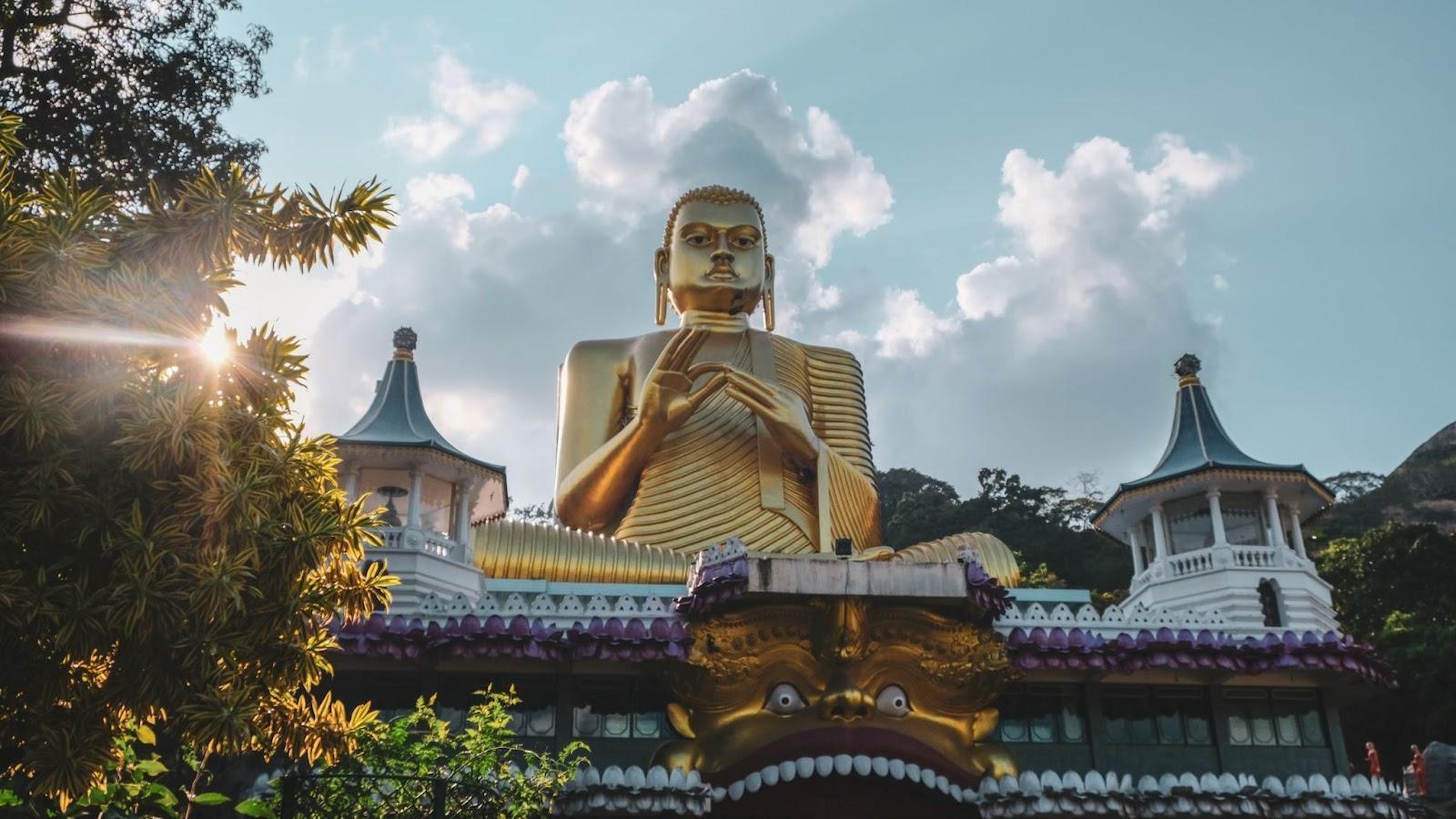
June
In June, Sri Lanka experiences the southwest monsoon season, bringing rain and increased humidity.
Weather by region
Western and southern coastal areas:
Temperature: Daytime temperatures range from 28°C to 32°C (82°F to 90°F).
Rainfall: There’s heavy rainfall along the western and southern coasts, with frequent and intense showers.
Eastern coastal areas:
Temperature: Daytime temperatures range from 28°C to 32°C (82°F to 90°F).
Rainfall: June still sees some rain, allowing for occasional outdoor activities.
Hill country:
Temperature: Daytime temperatures in the hill country remain cool, ranging from 15°C to 24°C (59°F to 75°F).
Rainfall: The hill country experiences increased rainfall in June. The misty and rainy weather creates a serene and lush atmosphere.
Northern and north-central areas:
Temperature: Daytime temperatures range from 28°C to 32°C (82°F to 90°F).
Rainfall: These regions also receive rain during the southwest monsoon, which is less intense than the coastal areas.
The cultural triangle:
Temperature: Daytime temperatures range from 24°C to 32°C (75°F to 90°F).
Rainfall: Central and inland areas experience increased rainfall in June.
Top 3 things to do in Sri Lanka in June
- Enjoy Ayurvedic Wellness retreats: Sri Lanka is known for its Ayurvedic traditions, and June can be an excellent time to indulge in wellness and spa treatments.
- Discover ancient caves and temples: Sri Lanka is home to numerous ancient caves and temples tucked away in rock formations and lush forests. Explore Dambulla Cave Temple and Buduruwagala Temple in the summer.
- Join in on Poson Poya: Poson Full Moon Poya Day is a significant Buddhist festival celebrated in Sri Lanka. It commemorates the arrival of Buddhism in Sri Lanka.
While beach activities may be less popular in June, there are plenty of temples to visit in Sri Lanka.
July
Sri Lanka continues to experience the southwest monsoon season, bringing rain and increased humidity to most parts of the country.
Weather by region
Western and southern coastal areas:
Temperature: Daytime temperatures range from 28°C to 32°C (82°F to 90°F).
Rainfall: There is heavy rainfall along the western and southern coasts, with frequent and intense showers.
Eastern coastal areas:
Temperature: Daytime temperatures range from 28°C to 32°C (82°F to 90°F).
Rainfall: The eastern coast generally receives less rain than the west and south.
Hill country:
Temperature: Daytime temperatures in the hill country remain cool, ranging from 15°C to 24°C (59°F to 75°F).
Rainfall: The hill country experiences increased rainfall in July, but it is less heavy than in coastal regions.
Northern and north-central areas:
Temperature: Daytime temperatures range from 28°C to 32°C (82°F to 90°F).
Rainfall: These regions receive less intense rain during the southwest monsoon.
The cultural triangle:
Temperature: Daytime temperatures range from 24°C to 32°C (75°F to 90°F).
Rainfall: Central and inland areas experience increased rainfall in July.
Top 3 things to do in Sri Lanka in July
- Visit Kandy Esala Perahera: One of Sri Lanka’s most grand and colourful festivals. It features elaborate processions with dancers, drummers, and adorned elephants parading through the streets.
- Attend the Hikkaduwa Beach Festival: This is ideal for anyone looking for an unforgettable experience in Hikkaduwa, Sri Lanka. This festival features local and international professional DJs, famous musicians and world-class dancers.
- Celebrate Vel: Enjoy various art forms, including music, dance, and traditional rituals. These are a unifying element in the community’s cultural and religious expressions.
July sees fewer tourists during the rainy season. It’s a great time to explore these UNESCO World Heritage Sites!
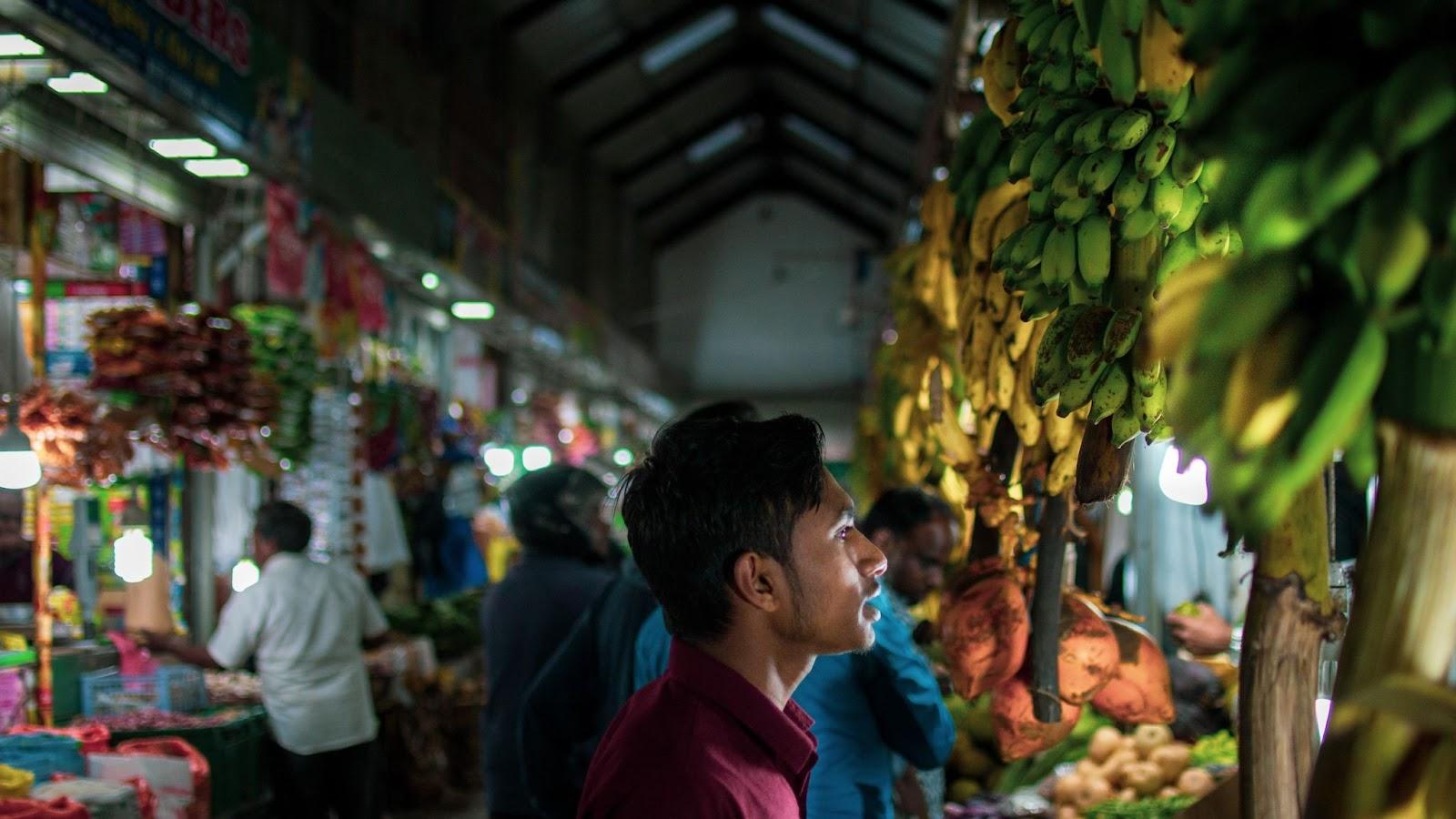
August
Sri Lanka moves from the southwest monsoon season to the northeast monsoon season.
Weather by region
Western and southern coastal areas:
Temperature: Daytime temperatures range from 28°C to 32°C (82°F to 90°F).
Rainfall: August can still bring occasional showers to the western and southern coasts as the transition between monsoon seasons occurs.
Eastern coastal areas:
Temperature: Daytime temperatures range from 28°C to 32°C (82°F to 90°F).
Rainfall: The eastern coast experiences less rainfall in August as it transitions into the dry season.
Hill country:
Temperature: Daytime temperatures in the hill country remain cool, ranging from 15°C to 24°C (59°F to 75°F).
Rainfall: The hill country receives some rainfall in August.
Northern and north-central areas:
Temperature: Daytime temperatures range from 28°C to 32°C (82°F to 90°F).
Rainfall: The northern and north-central regions also experience a decrease in rain as they transition into the dry season.
The cultural triangle:
Temperature: Daytime temperatures range from 24°C to 32°C (75°F to 90°F).
Rainfall: The central regions experience reduced rainfall in August.
Top 3 things to do in Sri Lanka in August
- Hike in the Knuckles mountain range: You can trek through lush forests and discover hidden waterfalls.
- Tea Plantation tours: Sri Lanka is famous for its tea. You can visit tea plantations in regions like Nuwara Eliya and Ella.
- Whale watching: Off the coast of easterly Trincomalee, you’ll spot blue whales. You can also see sperm whales, humpback whales, and killer whales.
September
Sri Lanka experiences a transitional period from the southwest to the northeast monsoon season.
Weather by region
Western and southern coastal areas:
Temperature: Daytime temperatures range from 28°C to 32°C (82°F to 90°F).
Rainfall: Typically a drier month along the western and southern coasts, with decreasing rainfall.
Eastern coastal areas:
Temperature: Daytime temperatures range from 28°C to 32°C (82°F to 90°F).
Rainfall: The eastern coast continues to experience dry and sunny conditions as it transitions into the dry season (Maha).
Hill country:
Temperature: Daytime temperatures in the hill country remain cool, ranging from 15°C to 24°C (59°F to 75°F).
Rainfall: The hill country experiences increased rainfall. The misty and rainy weather adds to the scenic beauty of the highlands.
Northern and north-central areas:
Temperature: Daytime temperatures range from 28°C to 32°C (82°F to 90°F).
Rainfall: The northern regions experience a decrease in rain as they transition into the dry season.
The cultural triangle:
Temperature: Daytime temperatures range from 24°C to 32°C (75°F to 90°F).
Rainfall: The central regions experience reduced rainfall in September.
Top 3 things to do in Sri Lanka in September
- Visit Minneriya National Park: Famous for ‘The Gathering’, where huge herds of elephants gather around the reservoir.
- Visit Vavuniya: The Kandamalai Raja Maha Viharaya is a Buddhist temple in northern Sri Lanka. Enjoy the rich history and beautiful surroundings.
- Attend the Binara Poya Festival: It encompasses cuisine, dance, illumination, and narrative traditions, symbolising the path of Gautam Buddha’s enlightenment journey.
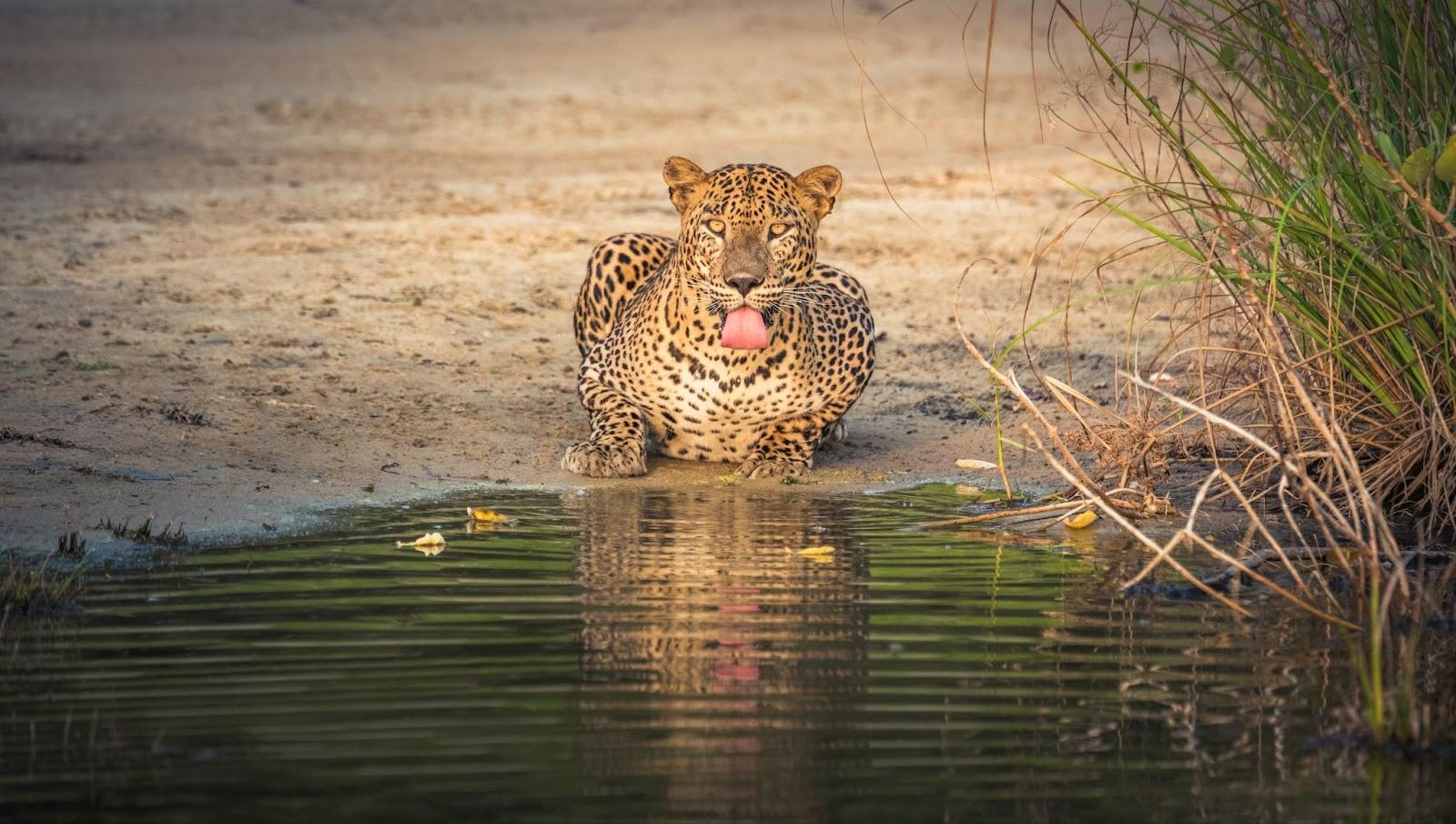
October
Sri Lanka moves from the northeast monsoon season to the inter-monsoon period.
Weather by region
Western and southern coastal areas:
Temperature: Daytime temperatures range from 28°C to 32°C (82°F to 90°F).
Rainfall: This is a transitional month for the southwest coast. While it can still have occasional rain, the weather generally becomes drier.
Eastern coastal areas:
Temperature: Daytime temperatures range from 28°C to 32°C (82°F to 90°F).
Rainfall: The eastern coast enjoys dry and sunny conditions as it transitions into the dry season.
Hill country:
Temperature: Daytime temperatures in the hill country remain cool, ranging from 15°C to 24°C (59°F to 75°F).
Rainfall: There’s increased rainfall in the hill country as it transitions between monsoon seasons.
Northern and north-central areas:
Temperature: Daytime temperatures range from 28°C to 32°C (82°F to 90°F).
Rainfall: The northern and north-central regions experience decreased rainfall as they move further into the dry season.
The cultural triangle:
Temperature: Daytime temperatures range from 24°C to 32°C (75°F to 90°F).
Rainfall: The central regions experience reduced rainfall, making it a better time for outdoor activities.
southwestern coastal areas:
Temperature: Daytime temperatures range from 28°C to 32°C (82°F to 90°F).
Rainfall: The southwestern coast sees improved weather conditions, with less rainfall.
Top 3 things to do in Sri Lanka in October
- Celebrate Deepavali: This is the Festival of Lights. You’ll see the streets and homes illuminated with candles and decorative lights. The lights symbolise the victory of light over darkness and the triumph of good over evil.
- Attend the World Spice Food Festival: Sri Lanka is known as the land of spices. This event is a fantastic food and drink celebration that brings together people from all over the world.
- Scuba dive in Passikudah: Known for its stunning reefs and diverse marine life, you can explore the vibrant coral gardens. The seas are calm, and there’s excellent visibility underwater around this time of year.
November
Sri Lanka shifts from the northeast monsoon season to the inter-monsoon period.
Weather by region
Western and southern coastal areas:
Temperature: Daytime temperatures range from 28°C to 32°C (82°F to 90°F).
Rainfall: November is a transition month for the southwest coast. The weather generally becomes drier.
Eastern coastal areas:
Temperature: Daytime temperatures range from 28°C to 32°C (82°F to 90°F).
Rainfall: The eastern coast continues to enjoy dry and sunny conditions.
Hill country:
Temperature: Daytime temperatures in the hill country remain cool, ranging from 15°C to 24°C (59°F to 75°F).
Rainfall: November sees decreased rainfall in the hill country compared to the previous months.
Northern and north-central areas:
Temperature: Daytime temperatures range from 28°C to 32°C (82°F to 90°F).
Rainfall: The north-central regions experience drier conditions as they transition into the dry season.
The cultural triangle:
Temperature: Daytime temperatures range from 24°C to 32°C (75°F to 90°F).
Rainfall: Similar to other inland areas, the central regions experience reduced rainfall in November.
southwestern coastal areas:
Temperature: Daytime temperatures range from 28°C to 32°C (82°F to 90°F).
Rainfall: The southwestern coast, including areas like Hambantota, continues to see improved weather conditions.
November offers great weather conditions for outdoor activities in many parts of Sri Lanka.
Top 3 things to do in Sri Lanka in November
- Indulge In river rafting: In Kitulgala, the adventure takes place on the Kelani River. While rafting, you’ll also enjoy the stunning rainforest scenery and thrilling rapids.
- Enjoy a hot air balloon ride: Visit Kandalama and enjoy the panoramic views. Set your sights on the iconic Sigiriya Rock Fortress and lush forests as you climb the skies.
- Visit the Pettah Floating Market: Vendors sell their goods from boats along a network of canals. You can find fresh fruits, vegetables, seafood, clothing, accessories, souvenirs, and local snacks. It’s a great place to explore and shop for traditional Sri Lankan items!
November offers a way to immerse yourself in the vibrant culture and shopping scene of Sri Lanka.
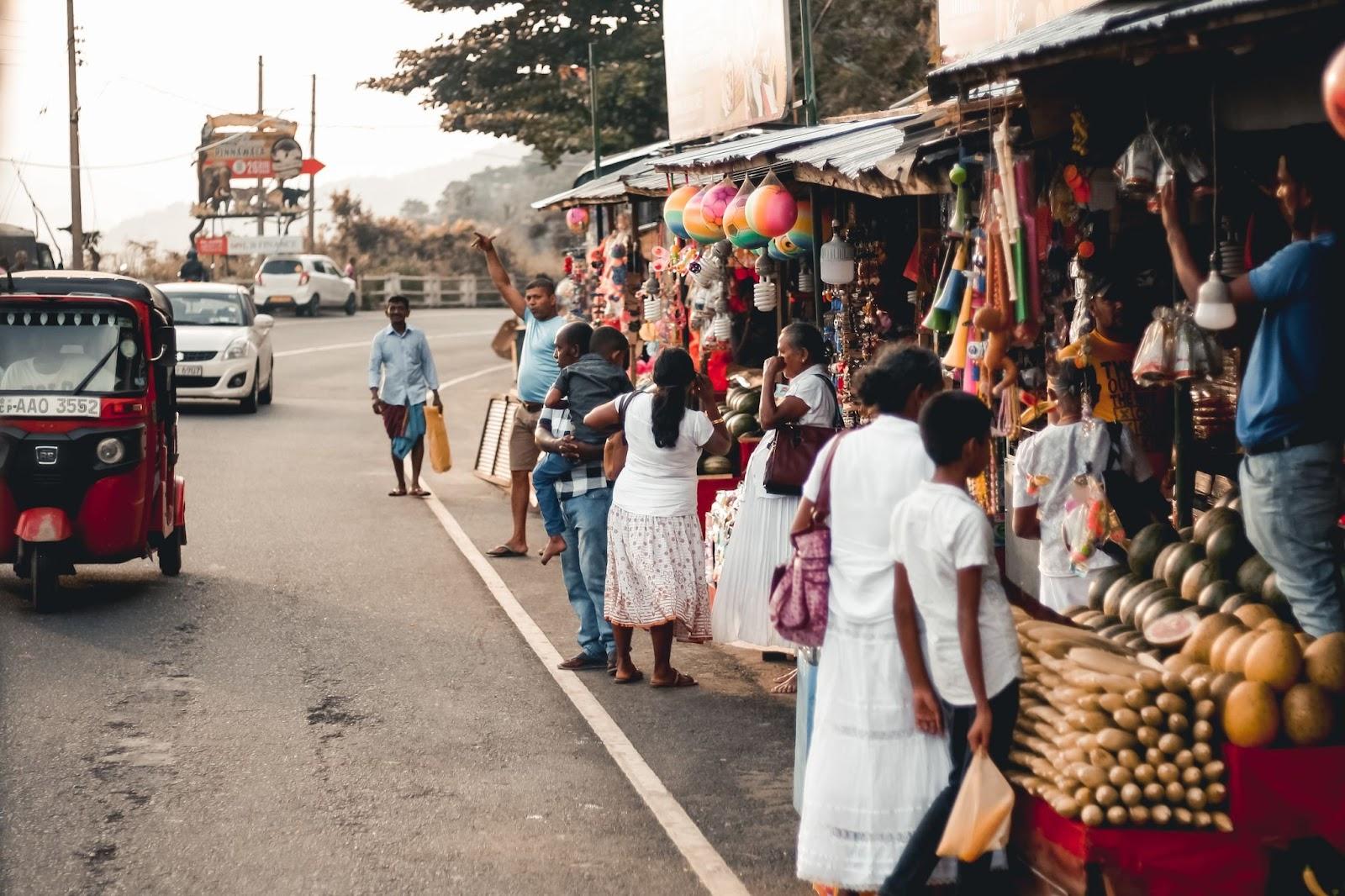
December
During the winter, Sri Lanka experiences diverse climates across its regions.
Weather by region
Western and southern coastal areas:
Temperature: Daytime temperatures can range from 28°C to 32°C (82°F to 90°F).
Rainfall: These areas may experience occasional short rain showers, but it’s generally dry and sunny.
Hill country:
Temperature: Daytime temperatures range from 17°C to 24°C (63°F to 75°F).
Rainfall: There can be occasional rainfall, so carrying an umbrella or raincoat is advisable.
Northern and eastern coastal areas:
Temperature: Daytime temperatures can reach 30°C to 32°C (86°F to 90°F).
Rainfall: These regions generally experience dry weather with minimal rain.
Cultural triangle:
Temperature: Daytime temperatures can range from 28°C to 32°C (82°F to 90°F).
Rainfall: Rainfall is minimal, making it a good time to explore historical sites.
Southwestern rainforest areas:
Temperature: Daytime temperatures range from 25°C to 30°C (77°F to 86°F).
Rainfall: Expect frequent rainfall, as this region receives the highest rainfall in December.
Southeastern Areas:
Temperature: Daytime temperatures can range from 28°C to 32°C (82°F to 90°F).
Rainfall: Rainfall is generally low, making it a good time for wildlife safaris.
Top 3 things to do in Sri Lanka in December
- Kite surfing: Kalpitiya is one of the best kite surfing destinations in the country. It’s known for its consistent wind conditions and shallow lagoons, making it ideal for beginners and advanced kite surfers!
- Celebrate Christmas in Negombo: The city has a large Christian population and is known for its festive atmosphere during the holiday season.
- Trekk to Ella Rock: One of the highlights of this trek is the stunning panoramic view from the summit. On a clear day, you can see the surrounding hills, tea plantations, and even the famous Ella Gap!
December is the perfect time to visit and participate in the festive season.
Takeaways
When is the best time of year to visit Sri Lanka? No matter when you decide to explore this beautiful island, Sri Lanka has something extraordinary to offer.
Sri Lanka has something to offer everyone, whether you’re interested in exploring hidden temples or immersing yourself in the natural beauty of its national parks.
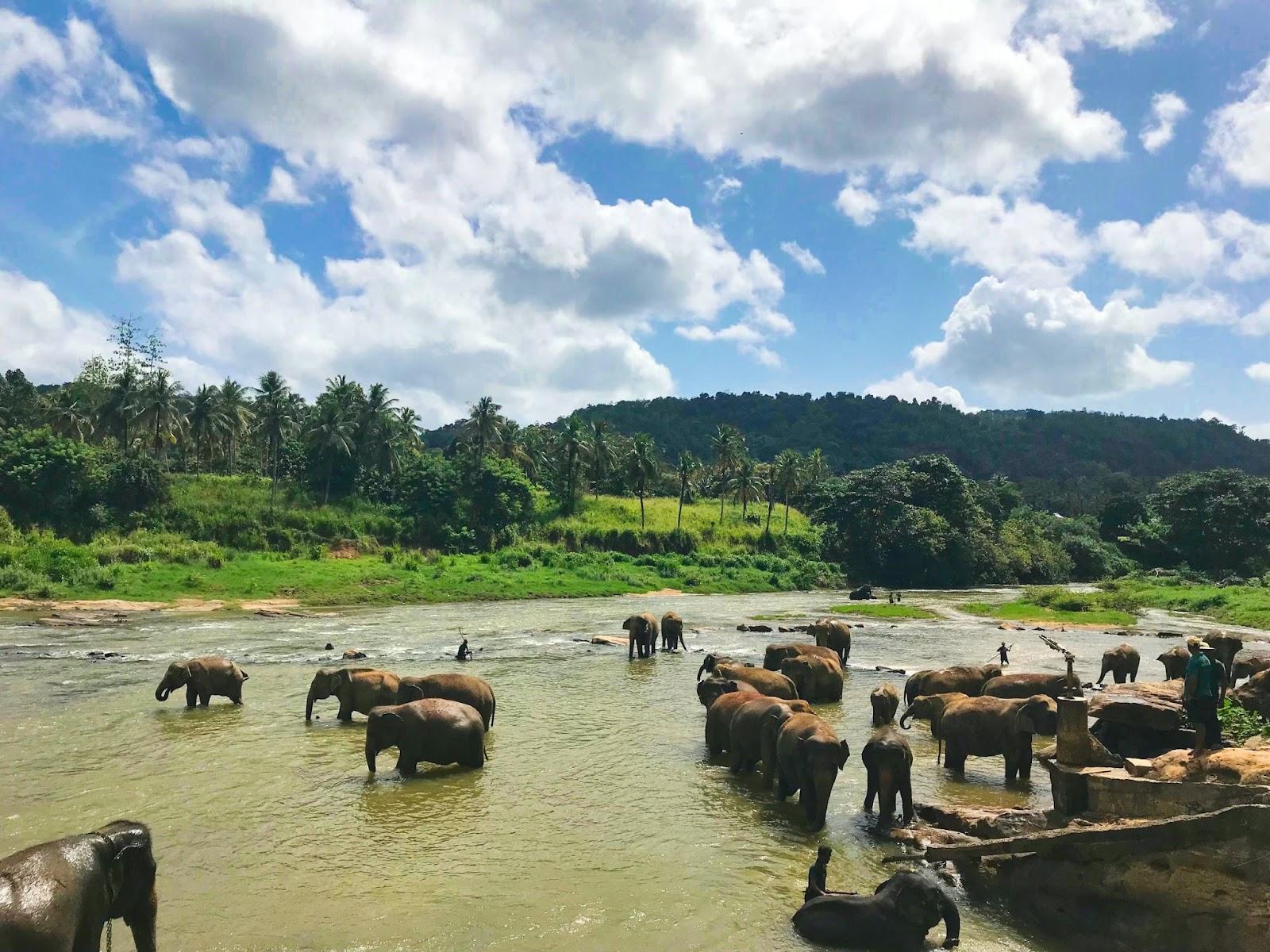
Order your Sri Lankan travel money
Get the best rates with Manor FX
Are you getting ready for your holiday to Sri Lanka? Then, Manor FX can help you with your currency needs.
The currency in Sri Lanka is the Sri Lankan rupee. Get the best GBP to Sri Lanka rupee exchange rates online, giving you more Sri Lankan currency for your trip.
Choose secure delivery to your home or workplace. Or pick up your Sri Lanka currency at our bureau near Heathrow. Our user-friendly online ordering system makes getting your hands on Sri Lankan rupees a breeze.
Trust Manor FX to help you seamlessly convert your pounds to Sri Lankan rupees.
FAQs
What is the cheapest month to travel to Sri Lanka?
The cheapest month to travel to Sri Lanka is during the shoulder seasons.
May to June: falling between the two monsoon seasons, it’s an excellent time to find lower hotel rates and airfare.
September to November: Just before the peak tourist season, these months offer favourable weather conditions and reduced crowds.
July to August: These months are part of the peak season for many parts of Sri Lanka. However, they are reasonably priced compared to the peak months of December to April.
What is the hottest month in Sri Lanka?
The hottest month in Sri Lanka is typically April.
Daytime temperatures in many parts of Sri Lanka often exceed 30°C (86°F). The central highlands are cooler because of their higher elevation. Daytime temperatures range from 20°C to 25°C (68°F to 77°F).
What is the tourist season in Sri Lanka?
Sri Lanka experiences two primary tourist seasons, often called the “peak season” and the “off-peak season.” This varies depending on the region of the country:
Peak Tourist Season:
- The peak tourist season in Sri Lanka typically runs from December to April.
- The western and southern coastal areas experience dry and sunny weather during this period.
- The central highlands, including places like Kandy and Nuwara Eliya, also enjoy pleasant weather during this time, with cooler temperatures.
Off-Peak Tourist Season:
- The off-peak tourist season in Sri Lanka occurs during the rest of the year, primarily from May to November.
- This period includes the southwest monsoon season, from May to September, and the northeast monsoon season, from November to February.
What is the coldest month in Sri Lanka?
Sri Lanka does not have a “cold” month as it has a tropical climate.
However, the central highlands of Sri Lanka experience cooler temperatures than the rest of the country. This is because these areas are at higher elevation levels.
The coolest months in these highland areas are typically December and January. Daytime temperatures in Nuwara Eliya can range from 17°C to 20°C (63°F to 68°F).